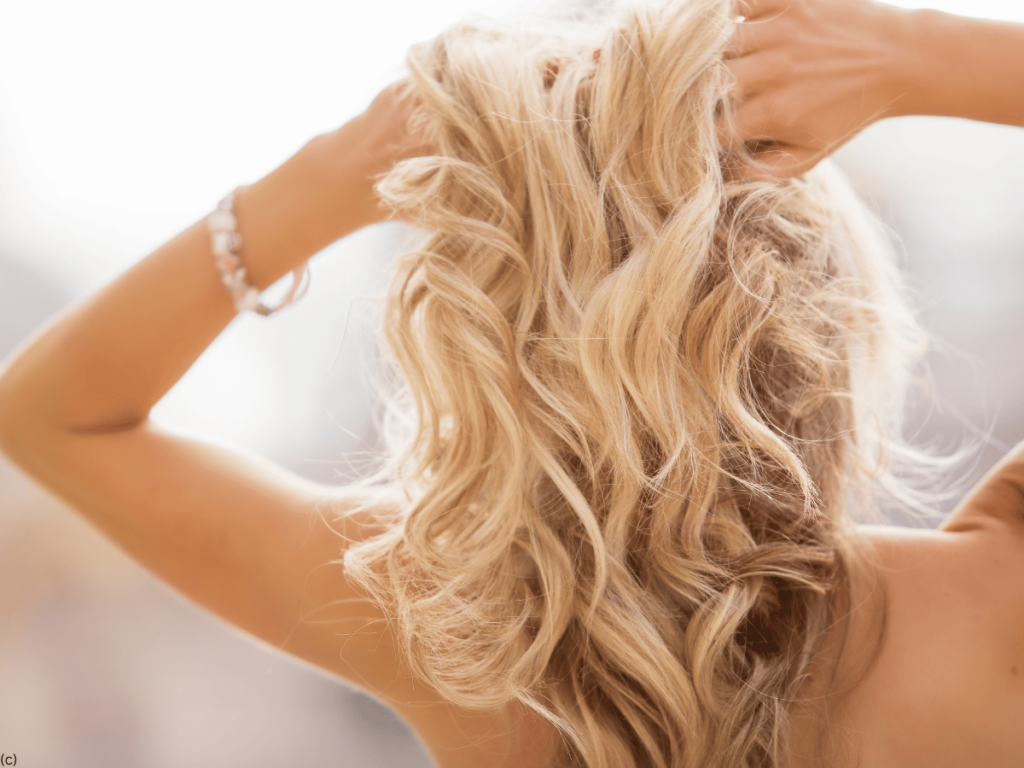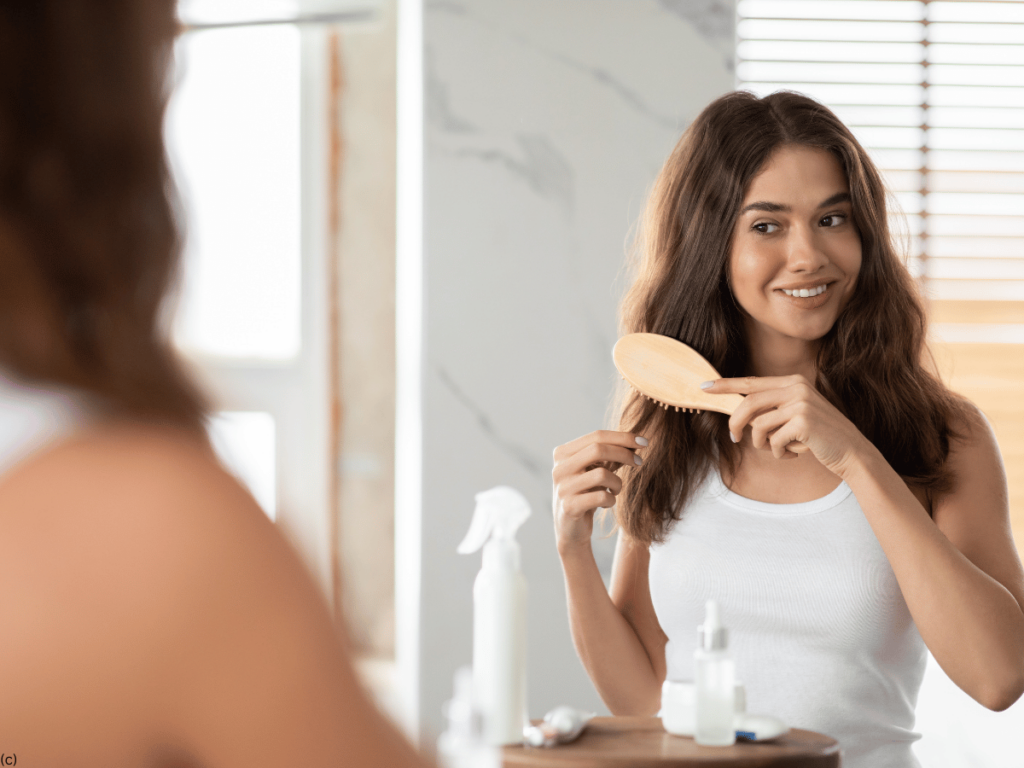
Taking care of your hair is essential not just for its appearance but also for its overall health. Healthy hair can boost your confidence, make you feel good, and contribute to your overall well-being. But with the myriad of hair products and advice out there, it can be overwhelming to figure out what your hair really needs. In this blog, we’ll explore simple, practical, and effective hair care tips that you can easily incorporate into your daily routine, regardless of your hair type or texture.
Understanding Your Hair Type
Before diving into specific hair care tips, it’s crucial to understand your hair type. Hair types are generally categorized based on texture and curl pattern:
- Straight Hair (Type 1): Lacks curls and tends to be shiny but can become oily faster.
- Wavy Hair (Type 2): Has a slight curl and can be fine or coarse.
- Curly Hair (Type 3): Has defined curls that are often prone to frizz.
- Coily Hair (Type 4): Tightly curled or kinky hair that is often very fragile and prone to dryness.
Knowing your hair type will help you choose the right products and care techniques tailored to your specific needs.
Daily Hair Care Routine
1. Gentle Cleansing
One of the most fundamental aspects of hair care is keeping your scalp and hair clean. However, the frequency and method of washing your hair can significantly impact its health.
- Shampooing: Choose a shampoo that suits your hair type. For instance, if you have oily hair, a clarifying shampoo can help control excess oil. If your hair is dry or color-treated, opt for a moisturizing or sulfate-free shampoo to avoid stripping your hair of its natural oils. Avoid using hot water, as it can dry out your hair and scalp; lukewarm water is best for rinsing.
- How Often to Wash: The frequency of washing your hair depends on your hair type. Oily hair may need to be washed every day, while dry or curly hair may only need washing once or twice a week. Over-washing can strip your hair of its natural oils, leading to dryness and damage, so find a balance that works for you.
2. Conditioning is Key
Conditioning your hair is just as important as shampooing, if not more. It helps replenish moisture, detangle strands, and protect your hair from damage.
- Choosing the Right Conditioner: Select a conditioner that complements your shampoo and addresses your hair needs. For example, if you have fine hair, a lightweight conditioner will provide moisture without weighing your hair down. For thick, curly, or coarse hair, a rich, deep conditioner can help manage frizz and add shine.
- Application: After shampooing, apply conditioner mainly to the ends of your hair, where it needs the most moisture. Avoid applying it directly to your scalp, as this can make your roots greasy. Leave the conditioner in for a few minutes before rinsing thoroughly.
- Leave-In Conditioner: For additional moisture and protection, consider using a leave-in conditioner, especially if you have dry or curly hair. This can be particularly beneficial in humid or dry climates, helping to lock in moisture and reduce frizz.
3. Detangling with Care
Detangling your hair can prevent breakage and damage, but it’s essential to do it gently.
- Use the Right Tools: Use a wide-tooth comb or a detangling brush designed for your hair type. Start detangling from the ends and work your way up to avoid pulling and causing unnecessary breakage.
- Wet or Dry Hair: Detangling is easier and safer on wet hair for most hair types, especially curly and coily hair. However, if your hair is prone to breakage when wet, consider applying a detangling spray or conditioner and gently combing through when it’s slightly damp or dry.
4. Protecting Your Hair from Heat
Heat styling tools like blow dryers, straighteners, and curling irons can cause significant damage to your hair if not used correctly.
- Heat Protectants: Always apply a heat protectant spray or serum before using any heat styling tools. This creates a barrier that reduces heat damage and helps maintain the health of your hair.
- Temperature Settings: Use the lowest temperature setting on your tools that still allows you to achieve your desired style. Fine or thin hair often requires less heat, while thick or coarse hair may need a higher setting. However, avoid the highest heat settings to minimize damage.
- Limit Heat Styling: Try to limit the use of heat styling tools to a few times a week. On other days, embrace your natural texture or opt for heatless styling methods, such as braiding your hair before bed to create waves or using foam rollers.
5. Trimming Regularly
Regular trims are crucial for maintaining healthy hair and preventing split ends from traveling up the hair shaft.
- Frequency: How often you should trim your hair depends on your hair type and goals. For example, if you’re growing your hair out, you might trim every 10-12 weeks. If you want to maintain a specific style or if your hair is prone to split ends, a trim every 6-8 weeks may be necessary.
- DIY or Professional: While some people prefer to trim their hair at home, visiting a professional stylist ensures an even and precise cut, especially for more complex styles.
Nourishing Your Hair from the Inside Out
What you eat can have a significant impact on the health of your hair. A balanced diet rich in vitamins and minerals is essential for strong, healthy hair.
1. Vitamins and Nutrients
Certain nutrients play a key role in promoting hair health:
- Biotin: A B vitamin that helps strengthen hair and nails. Foods rich in biotin include eggs, nuts, and whole grains.
- Vitamin E: Known for its antioxidant properties, vitamin E supports scalp health and stimulates hair growth. Foods like almonds, sunflower seeds, and spinach are good sources.
- Omega-3 Fatty Acids: Found in fish like salmon and mackerel, as well as flaxseeds and walnuts, omega-3 fatty acids help nourish the hair and support scalp health.
- Vitamin D: Essential for hair follicle health, vitamin D can be obtained from sunlight and foods like fortified dairy products and fatty fish.
2. Staying Hydrated
Drinking enough water is crucial for your overall health, including your hair. Proper hydration helps maintain the moisture balance in your hair, keeping it supple and less prone to breakage. Aim to drink at least 8 glasses of water a day, and adjust based on your activity level and climate.
3. Avoiding Harmful Habits
Certain habits can negatively impact the health of your hair:
- Smoking: Smoking can reduce blood flow to the scalp, affecting hair growth and contributing to hair loss.
- Excessive Drinking: Alcohol can dehydrate your body, including your hair. Limit alcohol intake to keep your hair healthy.
- Stress Management: Chronic stress can lead to hair loss or unhealthy hair. Practice stress management techniques like yoga, meditation, or regular exercise to support your overall health and well-being.
Tailored Hair Care for Different Hair Types
Different hair types require different care approaches. Here’s how you can tailor your routine based on your hair type:
1. Caring for Straight Hair
Straight hair tends to get oily faster because the natural oils from the scalp can easily travel down the hair shaft.
- Shampoo Frequently: Washing your hair more frequently can help manage excess oil.
- Lightweight Products: Use lightweight, volumizing products to add body without weighing your hair down.
- Avoid Over-conditioning: Apply conditioner only to the ends of your hair to avoid making your roots greasy.
2. Caring for Wavy Hair
Wavy hair can be prone to frizz but also has the potential for volume and texture.
- Hydrate Without Weighing Down: Use lightweight, hydrating products that define your waves without making your hair feel heavy.
- Air Dry When Possible: Let your hair air dry to enhance your natural waves, or use a diffuser attachment on your blow dryer to minimize frizz.
3. Caring for Curly Hair
Curly hair tends to be drier because the natural oils from the scalp have a harder time traveling down the twists and turns of the curls.
- Moisturize Deeply: Deep condition your hair regularly to maintain moisture and elasticity.
- Avoid Harsh Shampoos: Use sulfate-free shampoos that won’t strip your hair of its natural oils.
- Define and Protect Curls: Use curl creams or gels to define your curls and protect them from humidity.
4. Caring for Coily Hair
Coily or kinky hair is the most fragile hair type and requires extra moisture and gentle care.
- Co-washing: Consider co-washing (using conditioner only) instead of shampooing to avoid stripping your hair of its natural oils.
- Protective Styles: Incorporate protective styles like braids, twists, or buns to minimize breakage and retain length.
- Regular Sealing: After moisturizing, seal your hair with a natural oil like coconut or olive oil to lock in moisture.
Protecting Your Hair While You Sleep
How you treat your hair at night can have a significant impact on its health. Here are some tips for maintaining healthy hair while you sleep:
1. Use a Silk or Satin Pillowcase
Cotton pillowcases can cause friction and lead to breakage, especially for curly and coily hair types. Switching to a silk or satin pillowcase can reduce friction and help your hair retain moisture.
2. Tie Your Hair Up
If you have long hair, consider tying it up in a loose braid or ponytail to prevent tangles and breakage. Avoid tight hairstyles that can put stress on your scalp and hair.
3. Wear a Hair Bonnet or Scarf
Wearing a silk or satin bonnet or scarf can protect your hair from friction and help maintain your style overnight. This is particularly beneficial for curly, coily, and chemically-treated hair.
Special Treatments for Hair Health
In addition to your daily routine, consider incorporating special treatments to address specific hair concerns or give your hair a boost.
1. Hair Masks
Hair masks provide intense hydration and nourishment. Depending on your hair needs, you can use a hydrating mask for dry hair, a protein mask for strengthening, or a clarifying mask to remove buildup. Apply the mask once a week or as needed, and leave it on for the recommended time to reap the benefits.
2. Scalp Treatments
A healthy scalp is the foundation for healthy hair. Scalp treatments can help address issues like dryness, dandruff, or excess oil production. Look for treatments with ingredients like tea tree oil for dandruff, salicylic acid for oily scalps, or peppermint oil for stimulation.
3. Hot Oil Treatments
Hot oil treatments can help moisturize and strengthen your hair, especially if it’s dry or damaged. You can use oils like coconut, olive, or argan oil. Warm the oil slightly and apply it to your hair and scalp, then cover your hair with a shower cap and leave it on for about 20-30 minutes before washing it out.
Avoiding Common Hair Care Mistakes
Even with the best intentions, some common hair care mistakes can hinder your progress toward healthy hair:
1. Over-washing Your Hair
Washing your hair too often can strip it of its natural oils, leading to dryness and damage. Adjust your washing frequency based on your hair type and lifestyle.
2. Using the Wrong Products
Using products that aren’t suited for your hair type can lead to issues like buildup, dryness, or lack of volume. Always choose products designed for your specific hair needs.
3. Rough Towel Drying
Vigorously rubbing your hair with a towel can cause breakage and frizz. Instead, gently squeeze out excess water with a microfiber towel or an old t-shirt, which is gentler on your hair.
4. Ignoring Your Scalp
A healthy scalp is essential for healthy hair. Neglecting scalp care can lead to issues like dandruff, itchiness, or even hair loss. Regularly exfoliate and moisturize your scalp as needed.
Embracing Your Natural Hair
Finally, one of the most important aspects of hair care is embracing and loving your natural hair. Whether your hair is straight, wavy, curly, or coily, learning to work with your natural texture can make hair care more enjoyable and less of a chore.
Caring for your hair doesn’t have to be complicated or time-consuming. By understanding your hair type, following a consistent routine, nourishing your hair from within, and using the right products, you can achieve healthy, beautiful hair. Remember, your hair is unique, and what works for someone else might not work for you. It’s all about finding the right balance and practices that suit your hair’s specific needs. With these simple tips, you can take control of your hair care journey and enjoy the process of keeping your hair looking and feeling its best.







